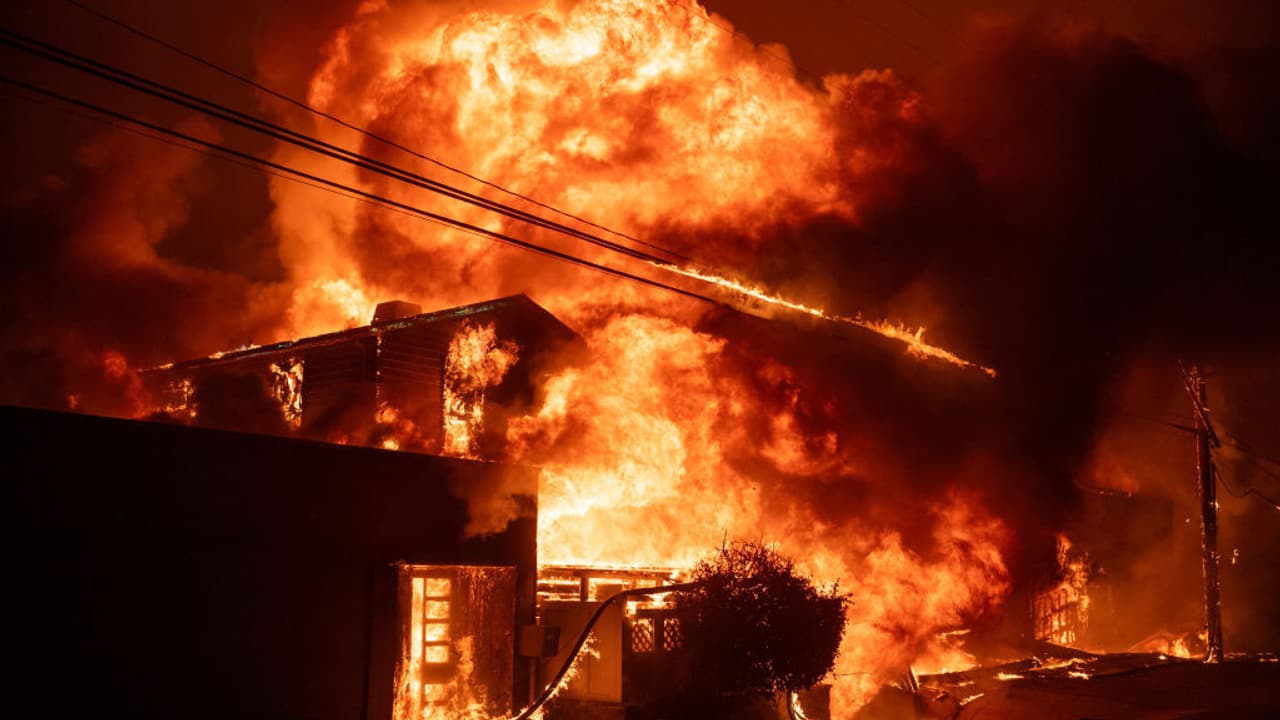The Palisades wildfire in Los Angeles County has rapidly grown to nearly 3,000 acres as of Tuesday evening, fueled by powerful Santa Ana winds.
The Palisades Fire in west Los Angeles has exploded in size, growing from 1,262 acres on Tuesday afternoon to nearly 3,000 acres by evening, according to the California Department of Forestry and Fire Protection (CalFire). The rapid spread has prompted expanded evacuation orders for parts of the coastal communities of Topanga and Malibu.

Fueled by powerful Santa Ana winds, which the National Weather Service described as “life-threatening” and the strongest in over a decade, the fire erupted around 10:30 a.m. Tuesday. These dry and gusty winds, common in Southern California during cooler months, are notorious for intensifying wildfires.
Federal Support Mobilized
US President Joe Biden has pledged federal support to combat the blaze, which he called a "terrible" disaster. In a statement released Tuesday night, Biden confirmed that the Federal Emergency Management Agency (FEMA) has approved a Fire Management Assistance Grant to help California cover immediate firefighting costs.
"I am being frequently briefed on the wildfires in west Los Angeles. My team and I are in touch with state and local officials, and I have offered any federal assistance that is needed to help suppress the terrible Pacific Palisades fire," he said.
"Earlier tonight, FEMA approved a Fire Management Assistance Grant to support areas that are impacted and help reimburse the state of California for the immediate firefighting costs. My Administration will do everything it can to support the response. I urge the residents of the Pacific Palisades and the surrounding areas of Los Angeles to stay vigilant and listen to local officials," the statement added.
The Role of Santa Ana Winds
The fire erupted around 10:30 a.m. Tuesday, driven by the notorious Santa Ana winds, which the National Weather Service has described as “life-threatening” and among the strongest in over a decade. These winds, which are common in Southern California during the fall and winter months, are known for their ability to rapidly spread wildfires.
Santa Ana winds are dry, warm, and gusty northeast winds that originate in the interior of Southern California and blow toward the coast. These winds move in the opposite direction of the typical onshore flow, which usually brings moist air from the Pacific Ocean into the region.
Santa Ana winds develop due to high-pressure systems over the Great Basin, a vast desert area in the western United States. As air descends from this region, it loses moisture and flows in a clockwise pattern toward Southern California. The winds must pass over the tall mountain ranges that separate the desert from the coastal areas, squeezing through narrow passes and canyons. This compression causes the air to accelerate, becoming drier and warmer as it descends, much like water rushing through a narrowing river channel.
Why Do They Pose a Wildfire Threat?
Santa Ana winds significantly increase wildfire risks because they drastically lower humidity levels, sometimes into the single digits. This extreme dryness makes vegetation—both living and dead—highly flammable. In addition, the powerful wind speeds can fan even a small spark, such as one caused by a downed power line, into a rapidly spreading wildfire. These conditions have been responsible for some of Southern California's most destructive wildfires.
The name "Santa Ana" is commonly believed to be tied to Santa Ana Canyon in Orange County. However, there are alternative theories, and the winds are sometimes referred to by other names, such as “devil winds.”
How Do They Impact People?
Santa Ana winds can sweep away urban smog, offering clear skies and stunning views. However, the dry air also has negative effects on people, causing chapped lips, dry throats, and irritated skin. These winds have a psychological impact as well; Raymond Chandler described them vividly in his short story Red Wind: “There was a desert wind blowing that night. It was one of those hot dry Santa Anas that come down through the mountain passes and curl your hair and make your nerves jump and your skin itch.”
